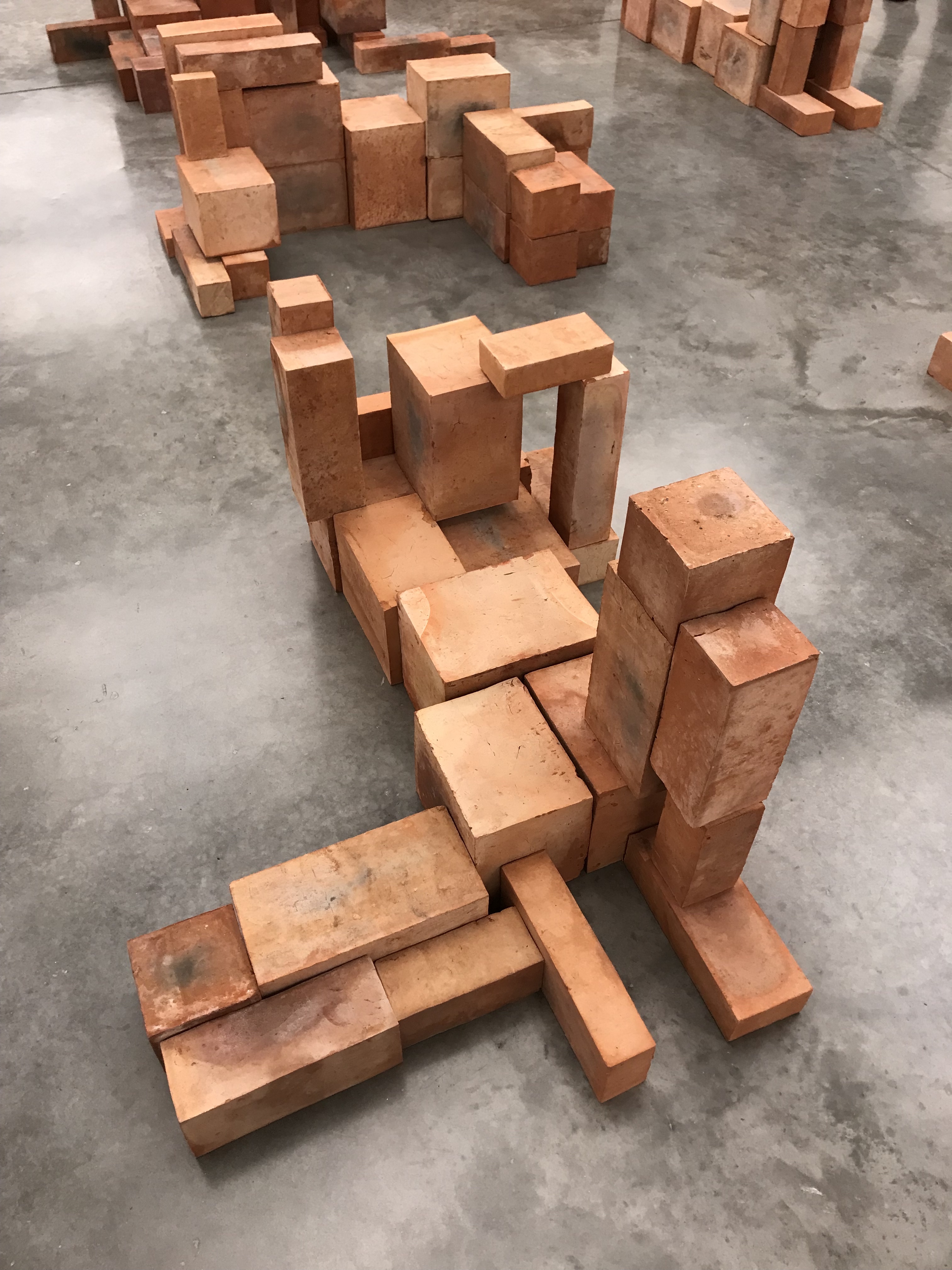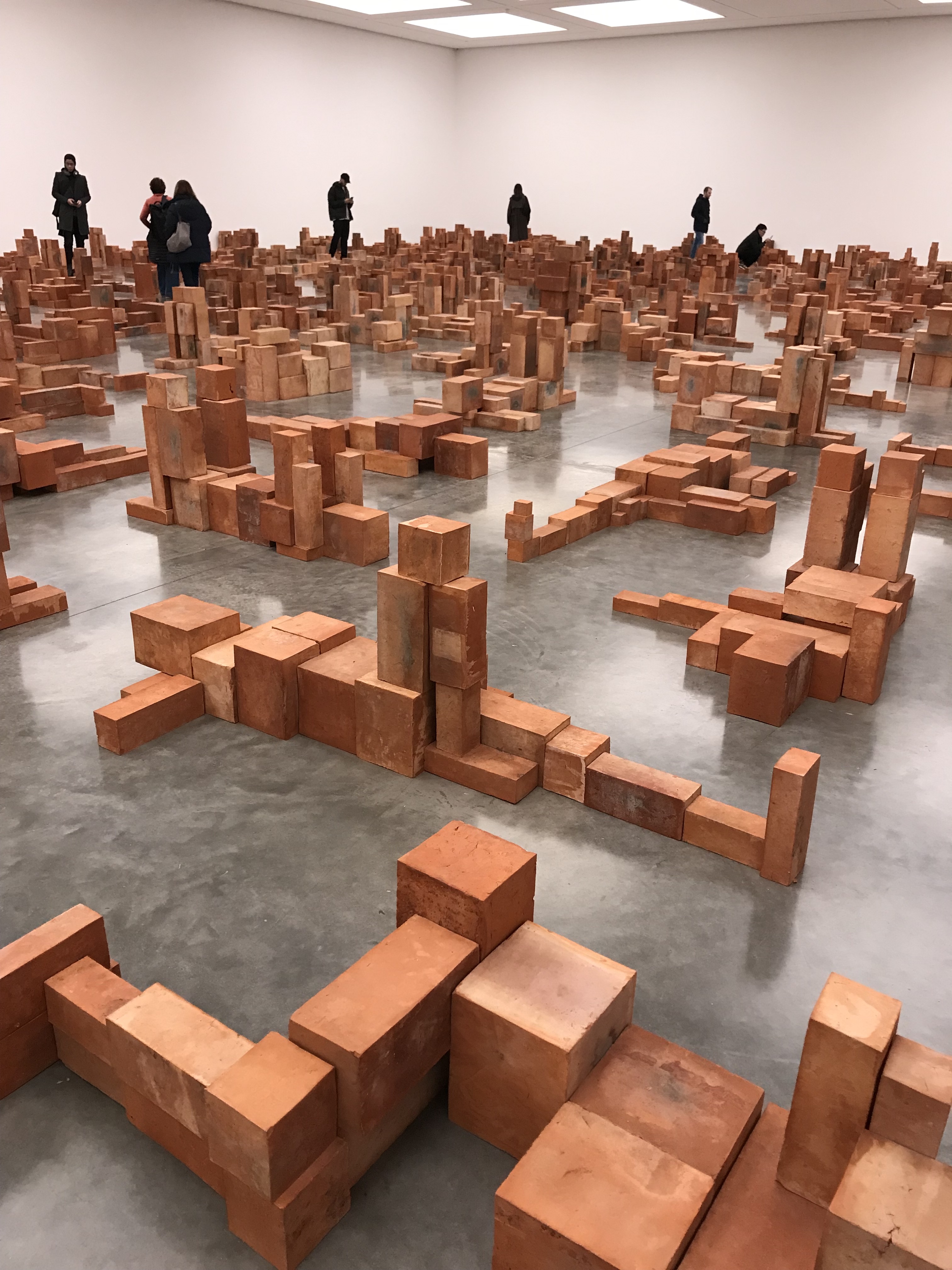Antony Gormley - Body Politic
White Cube - Bermondsey
22nd November - 3rd January
By Estelle Simpson
‘Resting Place’
Entering the room, a mass of figure-like sculptures unfolds across it, spralled in a variety of intimate positions that, discerning them as bodies at rest, you and I could imagine ourselves in. This network of 243 body forms feel deeply relavent right now in the way they provide an apparatus for self-examination and awareness. The focus on the body, especially the infinite darkness found within it, facilitates a resonant response. They encourage a reflection, given their postures and stillness that convey a lens on the plight of conflict, climate change, and resource scarcity on those forcibly displaced. Considering the space each clay block skeleton demands to rest and the way the veiwer is encouraged to move around the figures, a battle between a desire for a fixed area of sanctuary and an inclination to roam burgeons from the room.
Boasting an ouevre often criticised for its relentless repetition of the human subject, at Antony’s most recent show a gallery room becomes a site in which he conjures 244 unique body forms. Arguably, decades of focus on the human form means Antony can achieve consistently enigmatic arrangements such as this recent one at the White Cube. This new work provides an optical instrument in examining the tension between magration and refuge, both vital human urges that require contrasting relationships with the environement; it seems humans have both a compulsion for movement and stillness.
While his earlier ‘Sleeping Field’ (2016) comprises of much the same concept, ‘Resting Place’ seems to offer an increased sense of identifiable relatability, facilitating a deeply introspective response. While the previous iron material demanded a profuse sequestering miasma (recalling the cold, urbanite environment) this new labyrinth of fired clay blocks materialises an almost remarkable or spiritual impulse. Perhaps the medium of clay is closer in its derivitive from nature and more prehistorically associated, so despite the rectangular form there is an inherent connection with the blocks. While on the surface they reference industrial areas in their building block formation, they become increasingly human. Of course any structure is percieved through how we, as humans, interact with it; thus, any urbanised area is inevitably reflective of the developing values and aspirations of humans. Further, accuracy in reflecton of human scale of the models in this maze gives them a relative size to the viewer. Hence, navigating this sea of equivocally personable characters feels profound and relates moreso to a soulful exploration as a familiar sense of life is emitted from the room. With a heightened awareness of our relationship of foreboding new modern technologies, the change from robotic to essential dynamism this time feels more amicable for those urgently desiriing an authentic encounter in an increasingly artificial existence.
The show further departs from the cyber angst of its precurser ‘Fit’ in its use of tones that hark back to the colossal amber beauty of Gormley’s star ‘The Angel of the North’. Just like this icon, the scultpures in the show converse with the gallery in a way which refutes the imposing architectural ambience become akin with “white-spaces”. It rejects the intimidating atmosphere these institutions have unfortunately become associated with, mediating the site with an amicable persona, sufusing a warmness of colour and character. Artwork which breaks down the hostility of environments, whether that is a marker within the desolate landscape of the M1 or bodies at rest filling an empty gallery room with a maze to naviagate, are successful in the comfort they proivde. Our inherent need to migrate is nourished by the maze-like set up which allows you to interact with the space by meandering the bodies. However, through their physical presence within the environment they reflect the way we inhabit space with our own bodies, and this explores a contrasting urgency to have an area of ground in which we can occupy and exist within. Both provide a 3-Dimensional ‘thing’ that we can approach and walk around, achieving two dual human needs - providing us with a sense of orientation within space and creating an assuring reference point, mirroring our sense of place within the wider world.




